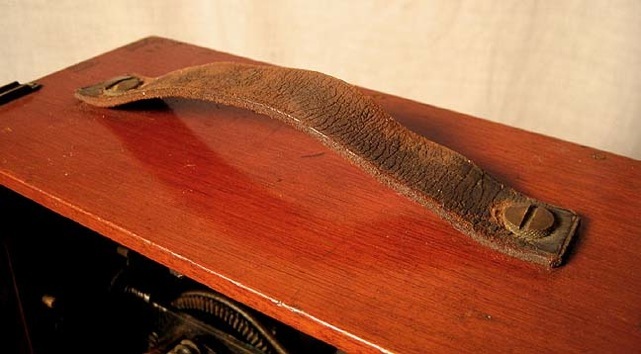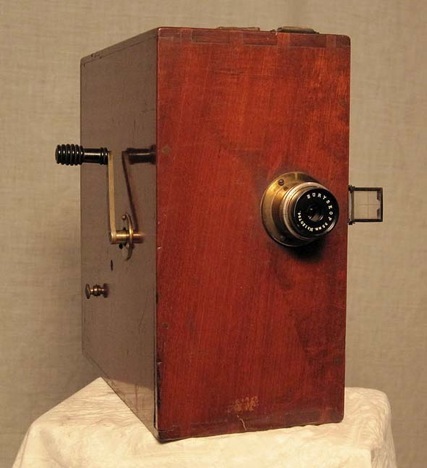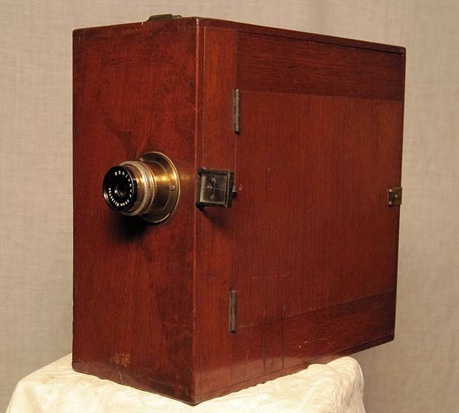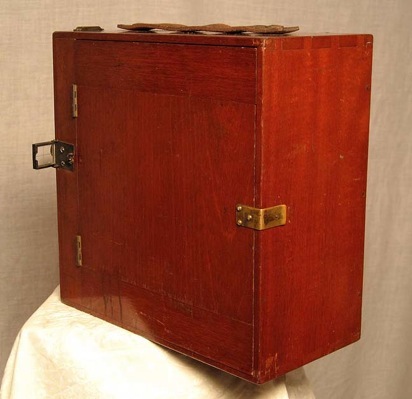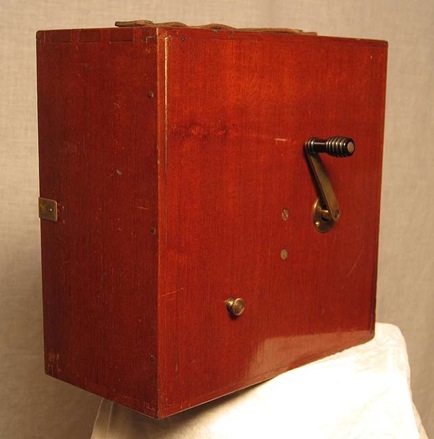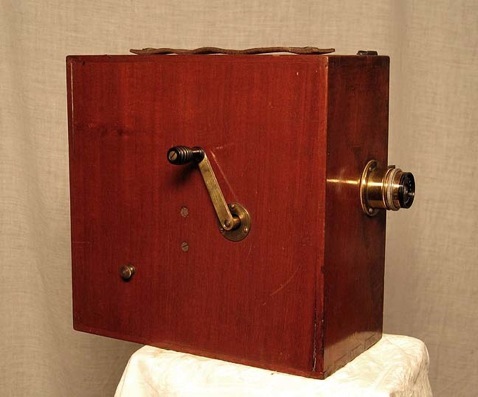
Darling Camera
July, 1913
Price upon request
Here is the type of shooter that many of you have asked to see on my web site. It is the easiest and most economical way to shoot hand-cranked footage I have ever had on my website.
I scratch tested this camera and it passed with flying colors.
This camera is rare enough that I have never actually had one before.
I have seen this camera as an “Empire” made by Alfred Darling for W. Butcher & Sons Ltd., England. This one has no holes in the case for the brass tag that would denote it was an Empire. The case is pristine with no mounting holes in it anywhere. I think this is a camera that Alfred Darling marketed for himself. It certainly was made by Darling.
Alfred Darling was one of the earliest of people in the film industry. Research says that he worked on his first piece of motion picture apparatus about 1895. He was a skilled, intelligent machinist / engineer and understood what a camera needed to have and could make any part for it. The early motion picture people were very fortunate to have Alfred Darling be in the right place at the right time.
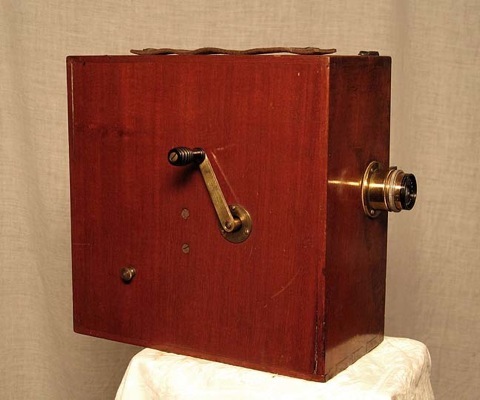
Darling was very instrumental in designing camera mechanisms that could be patented. All cameras had to transport film in a different way in order to avoid other camera’s patents. There are only so many ways to mechanically move film through a camera and Alfred Darling engineered many of them for his clients. If you look at the Kinemacolor camera on this website you will see where Alfred Darling adapted Charles Urban’s Bioscope pulldown claw mechanism into a Moy & Bastie camera body so Urban could avoid the Moy & Bastie patent and still use much of the Moy camera’s mechanism.
Darling was the main mechanical engineer for G. A. Smith and Charles Urban and was highly involved in the development of the Kinemacolor camera. He also helped develop the three-color camera mechanism first patented in 1898.
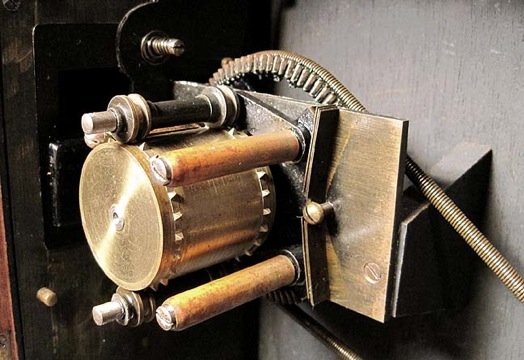
Darling manufactured this camera as a way for clients economically join the new market in animated photography. It was to be the easiest to use camera and designed to make movies as error free as possible. He made professional cameras that became extremely popular all over the world so this one was a step to the simpler side. It must have been an easy choice to make.
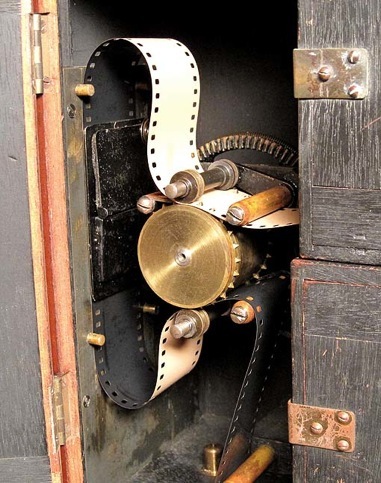
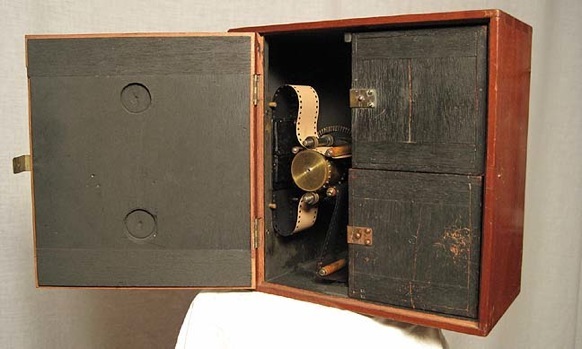
Here is a short video of cranking the camera. It cranks smoothly and evenly. I ran forty feet of film through the camera three different times. I’m very happy with the results.
The lens is a wonderful Voigtlander 55mm Euryskop f6.3 to f22. The whole idea behind this lens was to make the wide-open f6.3 give the camera great depth of field and make it so the cameraman didn’t have to find focus. The lens is in focus and fixed to the camera so there is no way to miss focus by moving the lens in and out from the film plane. The glass is clean and clear and the iris is smooth as silk through out its entire range. This lens should shoot some great looking period footage.
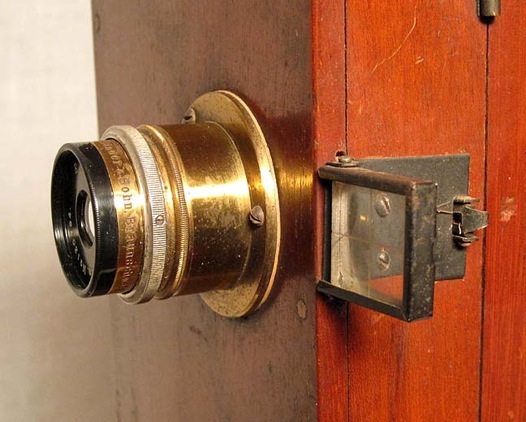
I took the picture of the quarter through the lens on the movie camera. I don’t want to mislead any of you. The lens was off the camera and hand held when I took the picture of the quarter. You can’t shoot macro footage with this camera without an extension tube.
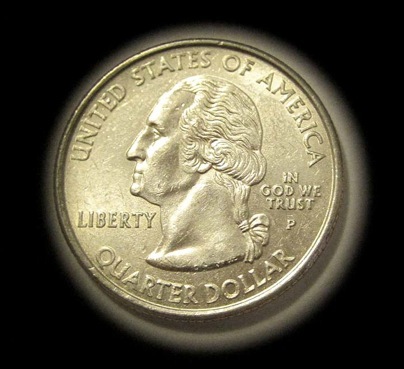
Here is the blended “A-D” that is Alfred Darling’s logo. It’s on the door of the film boxes. The film boxes hold 100 feet of film. That’s about a minute and a half of film at sixteen frames per second. There is a small crack in one mag door. Don’t forget it’s a hundred year old wood camera. There is some wood shrinkage in a mag door that I would just cover with some black camera tape if I were to shoot with it.
Unusually there are three magazines for the camera. This makes an easy reload for a second round of filmmaking. All things production should be easy with this camera and when not in use it is a museum quality display camera. Actually I’ve seen most museum’s cameras and they are not anywhere near the quality of this camera.
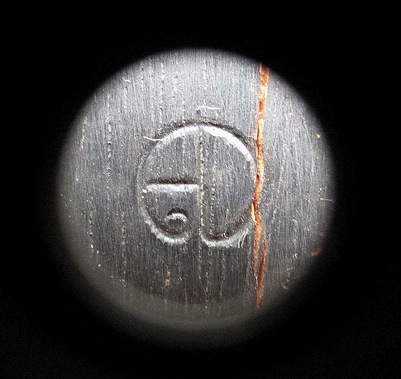
The mechanism is the simplest of all and cranks smoothly and easily. I believe that this camera was designed as a ‘starter’ camera for people that wanted to see if they could make their fortune in the new animated picture business and for wealthier people that wanted to make home movies.
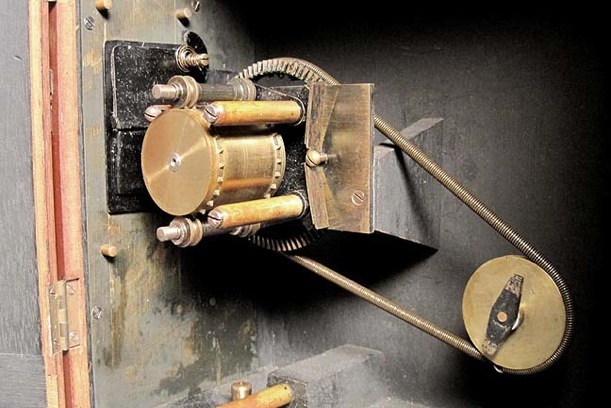
The camera is dated July, 1913. It is stamped in the bottom of the camera along with the initials “CW”. The initials are those of the craftsman at the Darling factory who built the camera.
The bottom mount tiedown screw is ¼ X 20 so this camera will fit a large variety of tripods. Bell & Howell Filmo movie camera tripods, Professional Junior, Miller tripod and head, and Vintage Craig Thalhammer tripods have the look of early wood sticks and will make this camera a nice display piece. And they are sturdy enough tripods that you can shoot from them.
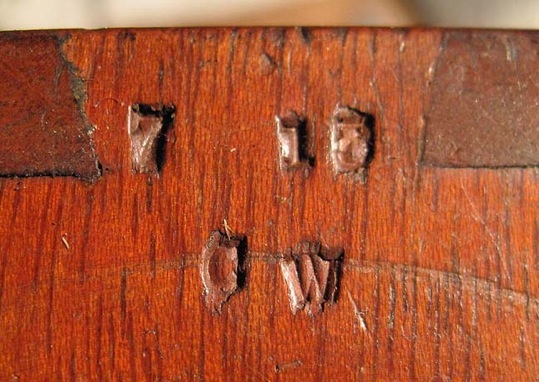
The carrying handle is leather and over the years I have found it is best to replace the leather handles, as they are prone to fail if you pick the camera up by them.
Let’s take a tour around the camera:
